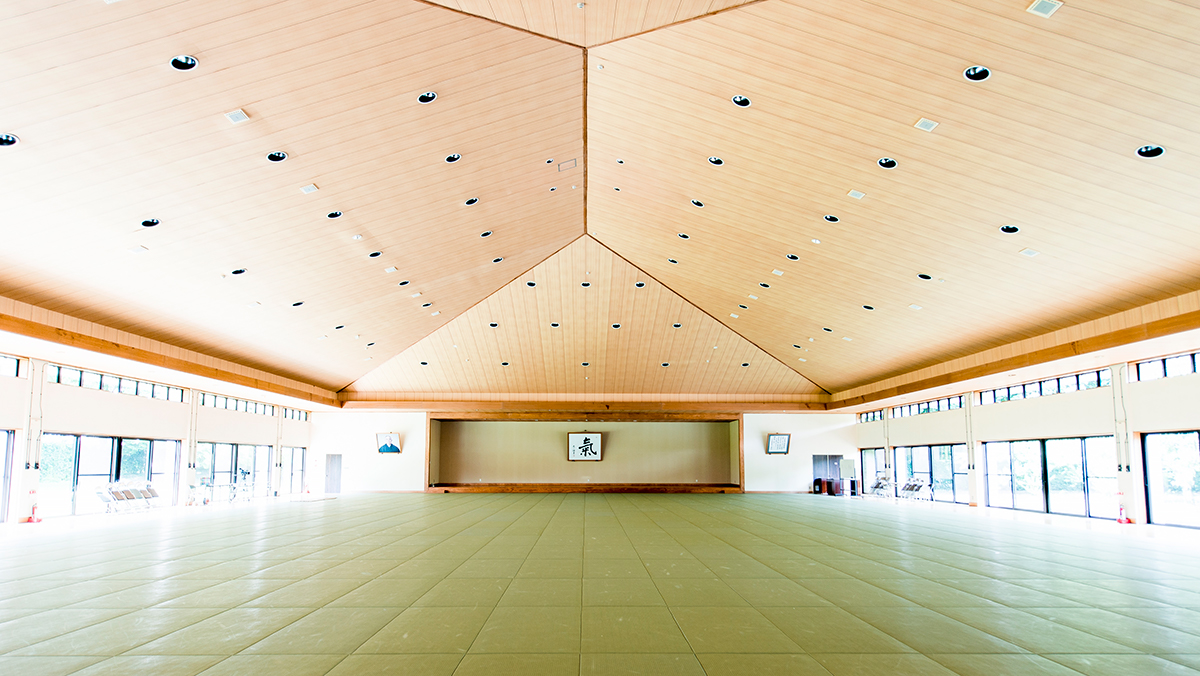The All Japan Ki-Aikido Taigi Competition was held at Ki no Kenkyukai Headquarters last month.
The purpose of this competition is not to compete with each other relative to technique. The purpose of this competition is demonstrate your oneness of mind and body which you have learned in your dojo and your daily life.
The judges watch participants’ state of mind and body oneness in every movement, not only each technique, but even when they are bowing, walking, and also their ma-ai (proper distance).
Both participants and observers of the competition frequently ask me “What is the point when watching an Ki-Aikido performance?”
Therefore, I will tell you how best to watch this. There are three points to watch for; “Balance”, “Rhythm” and “Largeness”.
What is “Balance”?
Balance means the posture with oneness of mind and body. If you try to throw your partner forcefully, you will be tense and off-balance. Your body wavers up and down, and right and left in your movement. However, if you calm your mind in one point in the lower abdomen and move from one point, your posture becomes stable without wavering no matter how strongly or quickly you move.
If you see Ki-Aikido techniques performed with oneness of mind and body, they are very beautiful. That’s when Ki-Aikido technique truly works. By watching only posture, you will understand the participant’s depth of understanding about oneness of mind and body.
What is “Rhythm”?
Rhythm means “natural rhythm” as the word suggests. If you try to throw your partner forcefully, your rhythm becomes too busy. On the other hand, if you lose power, your rhythm becomes too slow and with no Ki. Movement with oneness of mind and body always has natural rhythm. No matter how strongly or quickly you move, the rhythm will never be disturbed.
That’s when Ki-Aikido technique truly works.
By watching only the rhythm of the participants, you will understand their depth of understanding about oneness of mind and body.
What is “Largeness”?
Largeness means “largeness or fullness of the extension of Ki”, as the word implies.
When a master acts on the stage, the master looks very big. In this same way, when participants extend Ki, their performance looks very large. However, if your mind is clinging to the idea of trying to perform well, then you will pull your Ki and your performance will look small.
When your movement looks relaxed and large, your techniques work. By watching only the largeness of the participants’ movement, you will understand the depth of understanding of oneness of mind and body.
If you watch the taigi competition based on these three points, you will understand the depth of understanding of oneness of mind and body well, even if you are beginner.
Performance of the participants will be judged on a scale of one to ten. Then, the level of quality will be decided. You will learn a lot if you draw a comparison between your own sense of success, and the level at which the judges placed you.
The competition will be held next summer also. If you have time, please visit the competition next year.
About All Japan Ki-Aikido Taigi competition



